Understanding poetry requires a strategic approach‚ combining close reading and analysis. Start by reading the poem multiple times‚ then explore its themes‚ structure‚ and literary devices to uncover its deeper meaning.
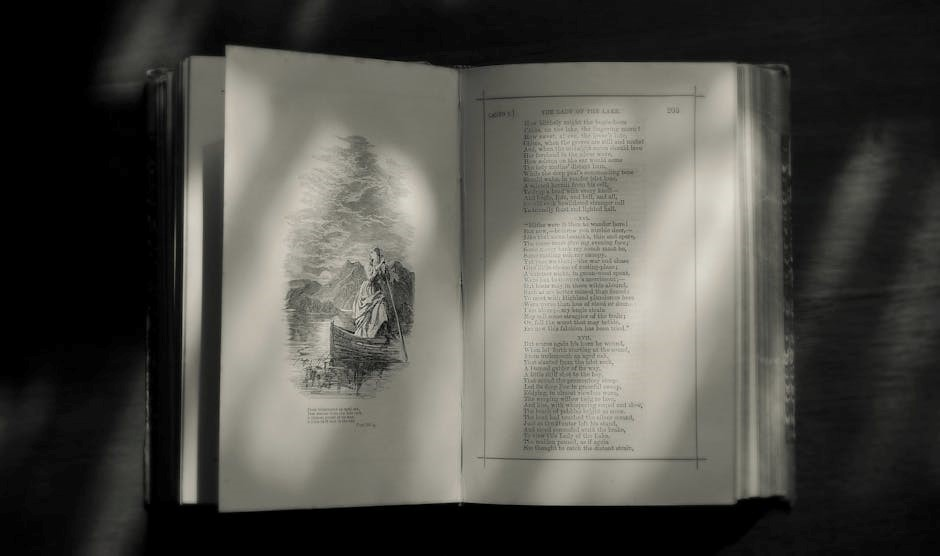
Brief Overview of Reading Poetry
Reading poetry involves a deep engagement with the text‚ focusing on sound‚ structure‚ and meaning. It requires patience and practice to uncover the layers of emotion and thought embedded within the verses. Poetry often uses language in unique ways‚ blending rhythm and imagery to convey complex ideas.
A systematic approach includes reading the poem aloud‚ analyzing literary devices‚ and exploring themes. Understanding the poet’s background and historical context can enhance interpretation. The goal is to connect with the poem on multiple levels‚ appreciating both its aesthetic beauty and intellectual depth.
Importance of Understanding Poetry
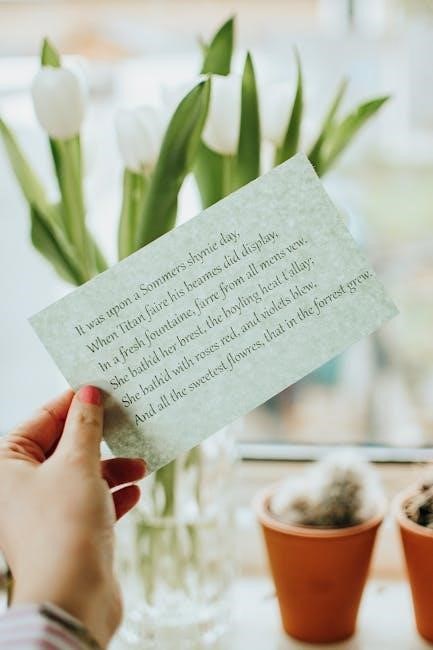
Understanding poetry is essential for grasping its emotional‚ cultural‚ and intellectual significance. It enhances analytical skills‚ fostering deeper connections with literature and life experiences. Poetry often reflects societal values and personal struggles‚ offering insights into human emotions and history;
By engaging with poetry‚ readers develop empathy and a broader perspective. It challenges the mind to interpret symbolism and imagery‚ fostering creativity and critical thinking. Ultimately‚ understanding poetry enriches both personal and intellectual growth‚ making it a vital part of literary exploration.
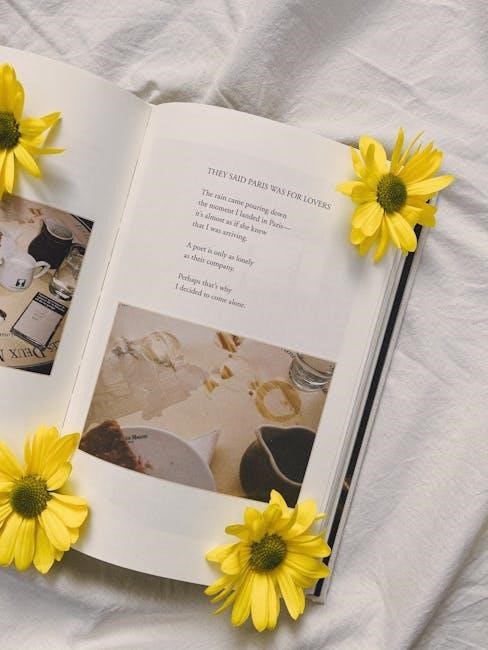
Preparing to Read the Poem
Preparing to read involves understanding the title‚ poet’s background‚ and gathering tools like dictionaries and pens to enhance comprehension and analysis.
Step 1: Read the Title
Reading the title is the first step in understanding a poem. Titles often provide clues about the poem’s focus‚ theme‚ or central image. They set the tone and guide the reader’s expectations. Pay attention to keywords and phrases that hint at the subject matter or emotional tone. Sometimes‚ titles are cryptic‚ requiring closer analysis. Consider the poet’s background and the historical context‚ as titles may reflect personal experiences or cultural references. Approach the title with curiosity and an open mind‚ as it often holds the key to unlocking the poem’s deeper meanings and significance.
Step 2: Understand the Poet’s Background
Understanding the poet’s background enriches your reading experience by providing context. Research the poet’s life‚ historical period‚ and cultural influences‚ as these often shape the themes and imagery in their work. Biographical details‚ such as major life events or societal circumstances‚ can offer insights into the poem’s underlying messages. Familiarize yourself with the poet’s unique style and recurring motifs. This knowledge helps bridge the gap between the reader’s perspective and the poet’s intentions‚ making the poem more accessible and meaningful. A well-informed reader can better appreciate the nuances and depth embedded in the poetry‚ leading to a more profound connection with the text.
Step 3: Gather Necessary Tools
Gathering the right tools enhances your ability to analyze and understand the poem effectively. Start with a dictionary to define unfamiliar words and a notebook for jotting down observations. Highlighters or colored pens can mark significant lines or themes. Accessing study guides or literary critiques provides additional insights. If available‚ biographical information about the poet and historical context can deepen your analysis. Organizing these tools beforehand ensures a smoother‚ more focused reading experience; Having everything ready allows you to concentrate on the poem’s content‚ facilitating a thorough and meaningful exploration of its elements and themes.
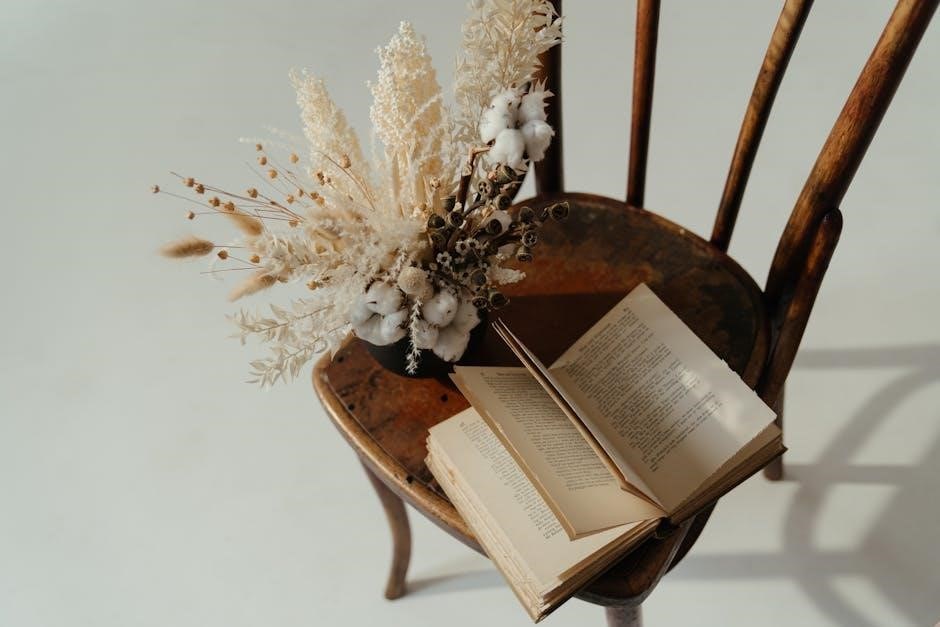
Reading the Poem
Engage with the poem by reading it aloud and listening to its rhythm. Analyze the text for themes‚ structure‚ and literary devices to uncover its deeper meaning.
First Reading: Understanding the Basics
Your initial reading should focus on grasping the poem’s surface meaning. Read it aloud to appreciate its rhythm and sound. Pay attention to the title for clues about the subject. Note the speaker‚ setting‚ and any obvious themes. Avoid overanalyzing at this stage; simply absorb the language and imagery. This foundational understanding will guide your deeper analysis later. By immersing yourself in the poem’s words‚ you’ll establish a connection essential for further exploration.
Second Reading: Paying Attention to Details
During your second reading‚ focus on uncovering the poem’s intricacies; Slowly analyze each line‚ noting patterns‚ imagery‚ and figurative language. Mark significant phrases or lines that stand out‚ as these often hold deeper meanings. Pay attention to shifts in tone‚ perspective‚ or language‚ which may signal thematic changes. Consider the poet’s use of similes‚ metaphors‚ or other literary devices to convey messages. This step requires patience‚ as it involves breaking down the poem’s structure and identifying how its elements contribute to its overall impact. By closely examining details‚ you’ll begin to uncover layers of meaning that enhance your understanding.
Reading Aloud: Appreciating the Sound
Reading a poem aloud enhances your connection to its rhythm‚ rhyme‚ and meter‚ allowing you to experience it as a musical composition. Poetry’s sound is integral to its impact‚ so listening to its cadence can reveal hidden patterns and emotional depth. Pay attention to how certain words or phrases resonate when spoken‚ as this can highlight the poet’s intentional use of alliteration‚ assonance‚ or consonance. Reading aloud also helps identify natural pauses or stresses‚ which may emphasize specific themes or feelings. This practice bridges the gap between the visual text and its auditory essence‚ making the poem feel more alive and engaging.
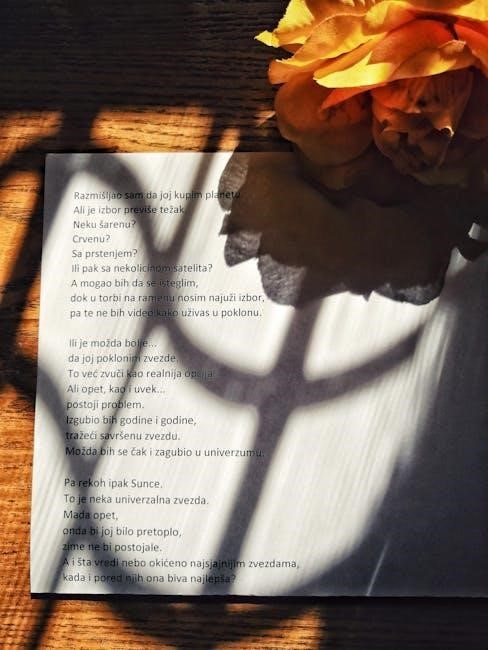
Analyzing the Poem
Analyze the poem by identifying themes‚ examining its structure‚ and exploring literary devices like metaphors or similes to uncover the poet’s message and artistic intent.
Identifying Themes and Messages
To identify themes and messages‚ read the poem carefully and note recurring ideas or emotions. Consider the poet’s perspective and how imagery‚ symbols‚ or metaphors convey deeper meanings. Themes often reflect universal ideas‚ such as love‚ loss‚ or freedom. Pay attention to shifts in tone or language that highlight the poet’s message. Analyze how the poem’s structure supports its theme. For example‚ a consistent rhyme scheme might emphasize harmony‚ while a fragmented structure could mirror chaos. Connecting personal experiences to the poem can also reveal its underlying messages‚ enriching your understanding of the poet’s intent.
Examining Structure and Form
Examining the structure and form of a poem is crucial for understanding its composition and intent. Pay attention to stanzas‚ lines‚ and rhyme schemes‚ as these elements create rhythm and pacing. Note how the poet arranges ideas visually‚ which can mirror the poem’s emotional flow. Identify the poetic form‚ such as sonnet‚ haiku‚ or free verse‚ as each form imposes unique constraints and opportunities. Analyze how the structure supports the theme or message‚ and consider how deviations from traditional forms enhance or challenge the poem’s meaning. Structure and form are not just aesthetic choices but tools that shape the poem’s impact and interpretation.
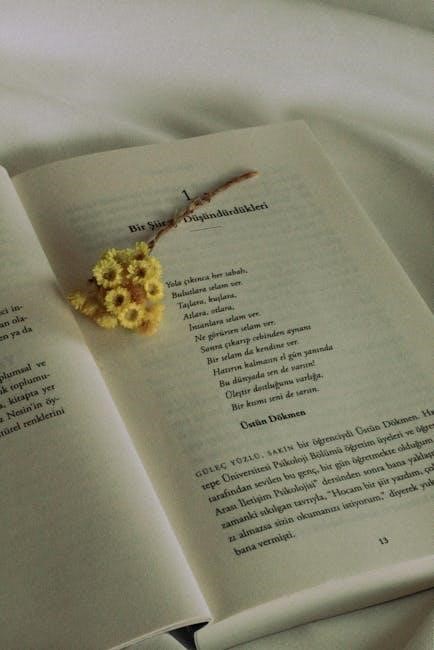
Analyzing Literary Devices
Analyzing literary devices is essential for uncovering a poem’s deeper meaning. Common devices include metaphor‚ simile‚ imagery‚ and symbolism‚ each contributing to the poem’s emotional and intellectual impact. Metaphors create vivid comparisons‚ while similes use ‘like’ or ‘as’ to draw connections. Imagery engages the senses‚ and symbolism carries layered meanings. These elements enhance the poem’s themes and messages‚ offering insights into the poet’s intent. By identifying and interpreting these devices‚ readers can better understand the complexity and richness of the poem‚ making their analysis more thorough and meaningful. Literary devices are the tools poets use to convey their unique vision and perspective.
Understanding Tone and Mood
Understanding tone and mood is crucial for interpreting a poem’s emotional landscape. Tone refers to the poet’s attitude or voice‚ while mood is the feeling the poem evokes in the reader. To identify tone‚ examine the language and word choice‚ such as formal‚ informal‚ joyful‚ or somber. Mood is created through imagery‚ diction‚ and structure‚ shaping the reader’s emotional response. For example‚ dark imagery might create a somber mood‚ while vibrant language could evoke joy. Recognizing these elements helps readers connect with the poem on a deeper level‚ enhancing their overall understanding of the poet’s message and intent. Both tone and mood work together to enrich the poetic experience.

Contextualizing the Poem
Contextualizing a poem involves understanding its historical‚ cultural‚ and social background to uncover deeper meanings. Consider the time period‚ the poet’s experiences‚ and any references to other works.
Historical Context
Understanding the historical context of a poem enhances its interpretation. Research the era and events surrounding its creation‚ as these often influence themes and imagery. For example‚ a poem written during a war may reflect societal tensions or personal struggles. Poets like W.B. Yeats‚ whose work is deeply rooted in Irish history‚ illustrate how historical events shape poetic narratives. By exploring the time period‚ readers can uncover underlying messages and appreciate the poet’s perspective. This step connects the poem to broader cultural and political movements‚ enriching the reader’s understanding of its significance and relevance.
Cultural Background
Exploring the cultural background of a poem deepens its interpretation. Poetry often reflects the traditions‚ beliefs‚ and values of the poet’s culture. For instance‚ works by poets like Jackie Kay or Anna Akhmatova reveal cultural nuances through language and imagery. Understanding these elements helps readers connect with the poem’s unique voice and perspective. Cultural references‚ such as symbols or rituals‚ may carry specific meanings that resonate within a particular community. By examining these aspects‚ readers can appreciate how the poet’s cultural identity shapes the poem’s themes and messages. This step bridges the gap between the reader’s experience and the poet’s cultural world‚ fostering a richer understanding of the text.
Personal Connections
Connecting personally with a poem enriches its interpretation. Readers often find meaning by relating the poem’s themes or emotions to their own experiences. Reflecting on how the poem resonates with personal memories or feelings can deepen understanding. Pay attention to lines that evoke strong emotions or memories‚ as these often reveal the poet’s intent. This personal connection allows readers to interpret the poem in a way that is uniquely meaningful to them. By bridging the gap between the poem and their own lives‚ readers can uncover new insights and appreciate the poem’s relevance beyond its surface meaning.
Intertextual References
Intertextual references in a poem connect it to other texts‚ themes‚ or cultural works. Identifying these links can deepen understanding by revealing broader meanings or allusions. Poets often nod to earlier works‚ echoing themes or styles. For example‚ a poem might mirror a mythological story or reflect another poet’s technique. Exploring these connections can uncover layers of meaning. When reading‚ consider how the poem interacts with other texts or traditions. This approach enriches interpretation and highlights the poem’s place within a larger literary or cultural landscape. Recognizing intertextual references enhances appreciation of the poet’s craftsmanship and the dialogue between works across time.

Annotating and Note-Taking
Annotating involves marking significant lines and writing observations. This helps identify patterns and themes‚ aiding in deeper analysis. Regular note-taking enhances comprehension and retention of the poem’s elements.
Marking Significant Lines
Marking significant lines helps focus attention on key phrases or imagery. Use a pencil to underline or highlight lines that stand out. This visual method aids in identifying patterns‚ themes‚ and emotional shifts. Pay attention to repetition‚ vivid descriptions‚ or lines that evoke strong feelings. By emphasizing these passages‚ you create a roadmap for deeper analysis. This technique also facilitates discussion and essay writing‚ as marked lines serve as evidence for interpretations. Consistent marking develops a personal connection with the text‚ revealing layers of meaning that might otherwise go unnoticed.
Writing Observations
Writing observations involves jotting down your initial reactions and insights about the poem. Start by noting why certain lines stand out—perhaps due to imagery‚ emotion‚ or language. Consider the poet’s intent and potential themes; Use your own words to describe these elements‚ avoiding direct copying from the text. Record tentative ideas‚ even if unsure‚ as they can evolve with further analysis. Reflect on how these lines connect to the broader poem‚ supporting or introducing ideas. Identify recurring themes and patterns‚ and ask questions about confusing elements to guide deeper exploration. Be detailed yet concise‚ using bullet points or short sentences for clarity. Maintain a consistent method‚ whether in margins‚ a notebook‚ or digitally‚ to organize and reference your thoughts easily. This process helps transition from surface-level understanding to profound analysis.
Identifying Patterns
Identifying patterns in a poem involves recognizing recurring elements like rhyme‚ meter‚ imagery‚ or repetition. Note how these patterns contribute to the poem’s structure and meaning. For example‚ a consistent rhyme scheme may suggest musicality or emotional resonance‚ while repeating imagery could emphasize a central theme. Look for patterns in word choice‚ sentence length‚ or stanza arrangement‚ as these often reflect the poet’s intent. Documenting these observations helps uncover underlying messages or symbolic connections. Patterns can also reveal contrasts or deviations‚ which are equally meaningful. By systematically identifying and analyzing these elements‚ you gain deeper insight into the poem’s layered significance and artistic design.
Reviewing Annotations
Reviewing annotations is a crucial step in deeply understanding a poem. After marking significant lines and writing observations‚ revisit your notes to ensure clarity and consistency. Look for patterns or connections between ideas that may have emerged during your analysis. Reflect on whether your initial interpretations hold up or if new insights have developed. Organize your annotations into themes or categories to identify the poem’s central messages. This process helps solidify your understanding and prepares you to discuss or write about the poem more effectively. Regularly reviewing annotations also enhances your ability to analyze poetry critically and comprehensively.

Discussing and Sharing Insights
Engaging in discussions about poetry fosters deeper understanding and diverse perspectives. Share your interpretations‚ listen to others‚ and explore how different viewpoints enrich your analysis of the poem.
Talking About the Poem
Talking about the poem involves sharing insights and perspectives openly. Begin by summarizing key themes or questions the poem raises. Discuss literary devices‚ such as metaphors or imagery‚ and how they contribute to the poem’s meaning. Encourage others to share their interpretations‚ fostering a collaborative environment. Active listening is crucial‚ as different viewpoints can deepen understanding. Relate personal experiences or emotions evoked by the poem to connect on a deeper level. This dialogue not only enhances comprehension but also highlights the richness of poetry in sparking varied responses and reflections among readers.
Sharing Interpretations
Sharing interpretations of a poem involves exchanging perspectives and insights with others. This collaborative process enriches understanding by revealing diverse viewpoints. Encourage open dialogue‚ where participants can express their thoughts on themes‚ symbols‚ or emotional resonance. Active listening is key‚ as it fosters mutual respect and deeper comprehension. Sharing interpretations also allows for the identification of patterns or motifs that may have gone unnoticed. By linking personal experiences or cultural contexts to the poem‚ discussions become more meaningful. This exchange not only highlights the poem’s complexity but also underscores the value of collective analysis in uncovering its layers of meaning.
Participating in Discussions
Participating in discussions about a poem fosters a deeper understanding by engaging with diverse perspectives. Encourage active listening and respectful dialogue to create a collaborative environment. Prepare by reviewing the poem and noting key points to share. Discussions can reveal new insights‚ as others may highlight elements you overlooked. Use questions to clarify interpretations and explore themes. Sharing observations and hearing others’ viewpoints enriches the analytical process. Digital tools‚ like PDF analyzers‚ can aid in examining structure or themes. Open-minded participation ensures a dynamic exchange of ideas‚ ultimately enhancing your appreciation of the poem’s complexity and layered meanings.
Mastering poetry analysis requires practice and curiosity. Explore resources like PDF guides and scholarly articles to deepen your understanding and appreciation of poetic works.
Summarizing Key Points
To effectively analyze a poem‚ start by reading it multiple times to grasp its essence. Identify themes‚ structure‚ and literary devices‚ as these elements reveal the poet’s message. Pay attention to sound and rhythm‚ which enhance the emotional impact. Consider the poet’s background and historical context to deepen understanding. Use tools like dictionaries and guides to clarify meanings. Annotate the poem to highlight significant lines and patterns. Engage in discussions to share interpretations and gain new insights. Finally‚ explore further resources‚ such as PDF guides and scholarly articles‚ to refine your analytical skills and broaden your appreciation of poetry.
Exploring Further Resources
Enhance your understanding of poetry by exploring additional resources. PDF guides‚ such as those from Jim Burke’s Reading Tools and Tips‚ offer practical advice for analyzing poems. Websites dedicated to poetry analysis provide in-depth insights and summaries of various works. Tools like Claude’s Visual PDFs enable detailed examination of poetic structures. Academic databases‚ such as JSTOR‚ offer scholarly articles on poetry analysis. Books on poetic theory and anthologies of classic poems can further enrich your study. By leveraging these resources‚ you can deepen your comprehension and refine your analytical skills‚ fostering a more meaningful connection with poetry.
